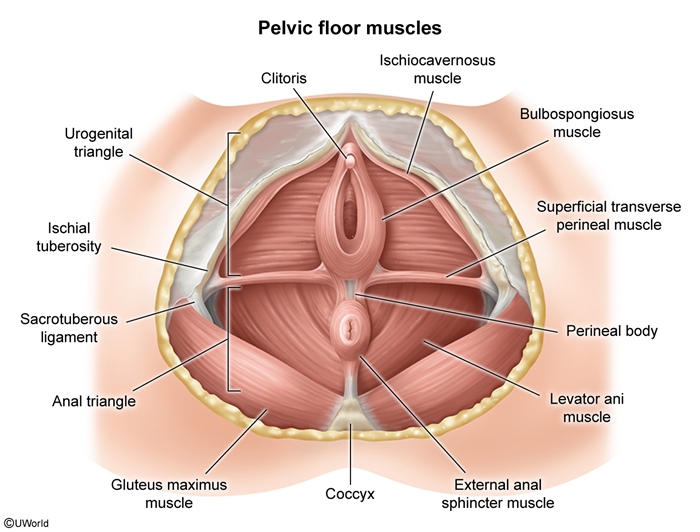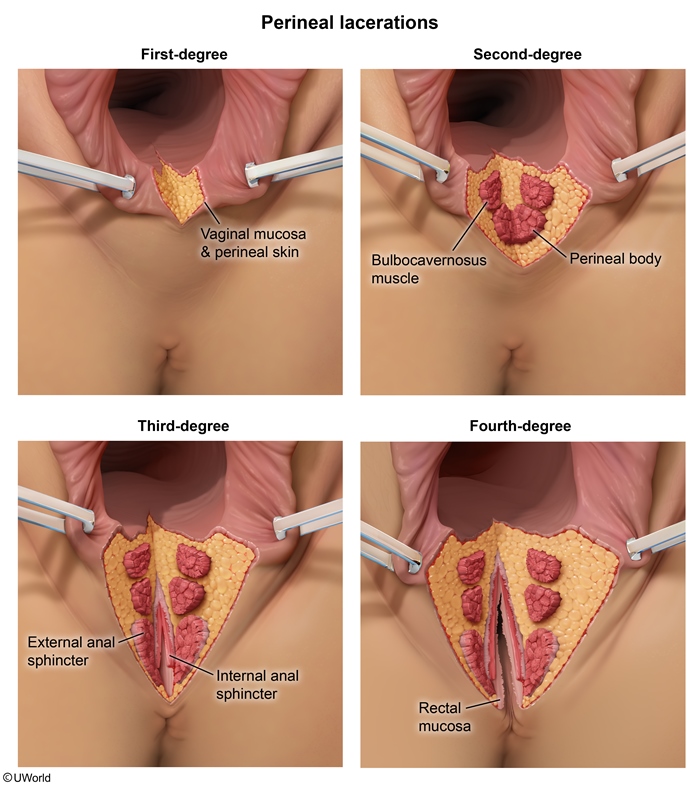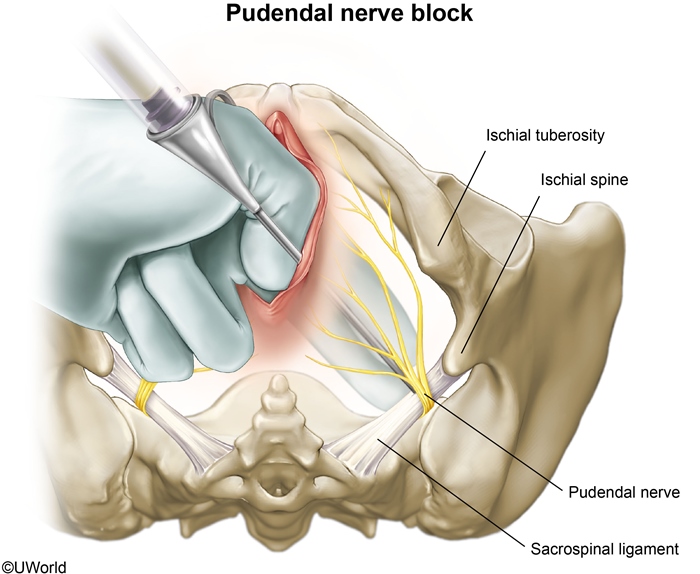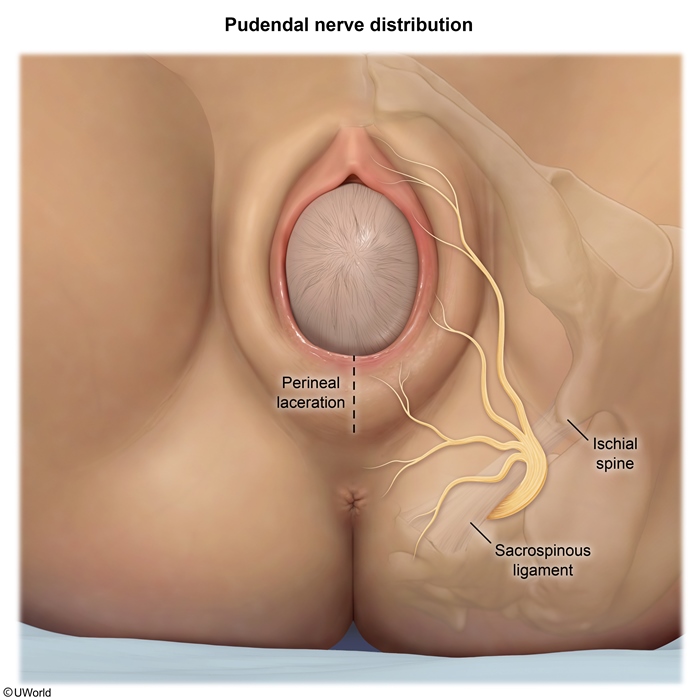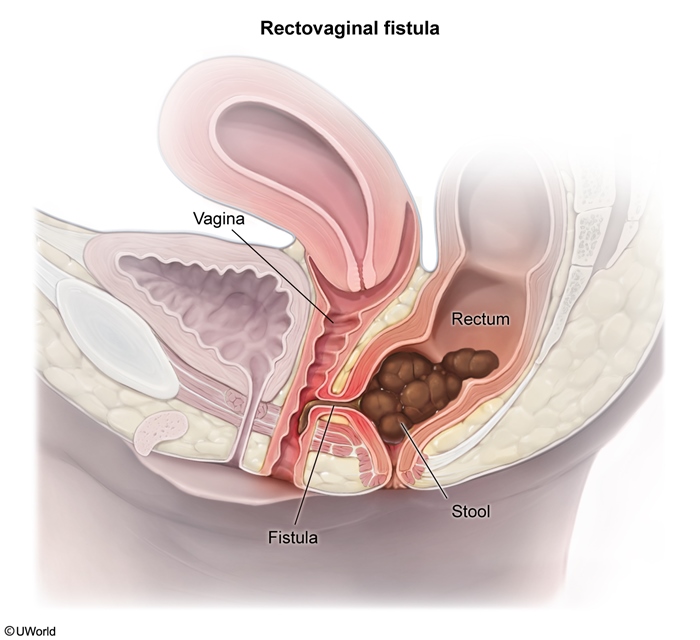Perineal Lacerations
Article Sections
Introduction
During vaginal delivery, pressure from the fetal head and maternal pushing causes vaginal, labial, and perineal edema. The vagina and labia, which are relatively elastic, can stretch to accommodate vaginal delivery. The perineum is less elastic and more likely to lacerate; these lacerations are classified based on the structures involved, which determines management and prognosis.
Anatomy of the female perineum
The perineum separates the vagina and anus. Anteriorly, the vaginal orifice is surrounded by the bulbospongiosus muscle, making it the most likely perineal muscle to be injured because it is the most anterior. Posteriorly, the anal orifice is surrounded by the external and internal anal sphincter muscles (ie, anal sphincter complex), which are at risk for injury with deep lacerations.
At the center of the perineum is the perineal body, which serves as an anchor point for multiple superficial pelvic floor muscles and consists of muscular, fascial, and fibrous components (
Continue Learning with UWorld
Get the full Perineal Lacerations article plus rich visuals, real-world cases, and in-depth insights from medical experts, all available through the UWorld Medical Library.
Figures
